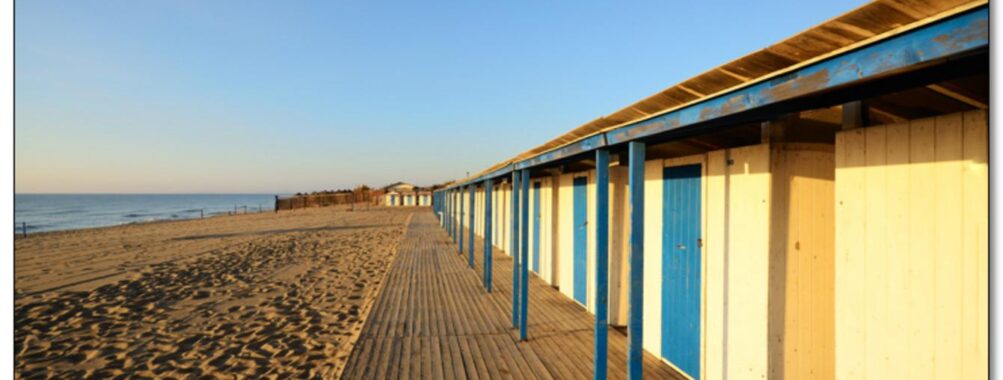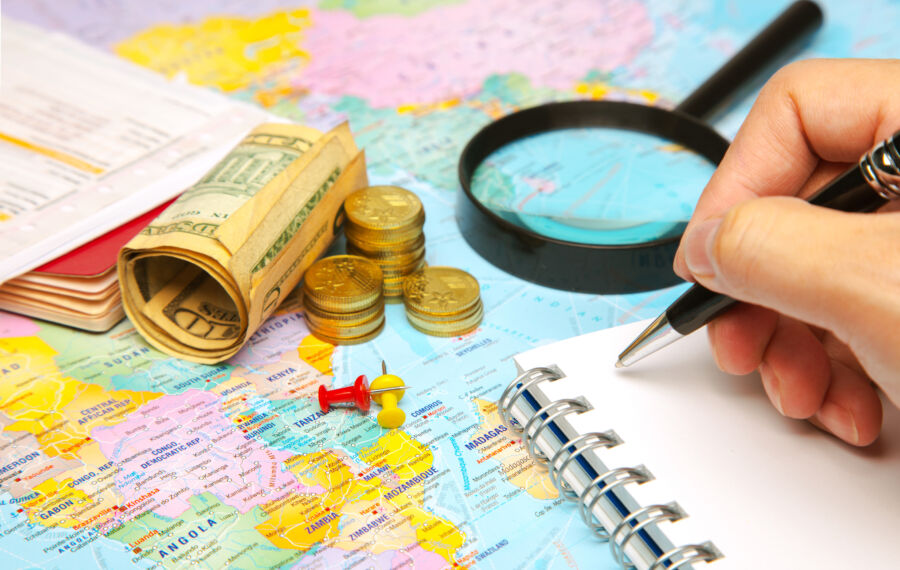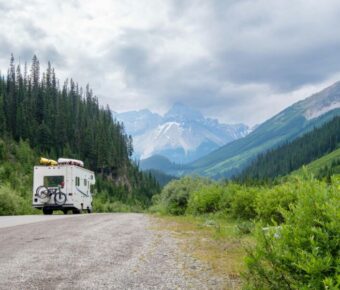
Cuba Trip Cost: Affordable Paradise Getaway From $500/Week
Planning a trip to Cuba? You’re in for a unique experience that blends vibrant culture, stunning beaches, and rich history. But how much will it cost? in 2025, a typical one-week trip to Cuba for two people will cost around $3,000. This includes flights, accommodation, food, and activities. This breaks down to about $215 per person per day.
Cuba’s dual currency system can be tricky for travelers. You’ll mainly use Cuban Pesos (CUP) for local transactions, while some tourist spots may still accept Cuban Convertible Pesos (CUC). It’s smart to bring cash and exchange it at official spots.
Your biggest expenses will likely be flights and accommodation. Expect to pay $400-$500 per person for flights, depending on your starting point. For lodging, you can stay in a casa particular (private home) for $20-$30 per night or splurge on a hotel for $100+ per night. Food, transportation, and activities are relatively affordable, helping you stretch your budget further.
Contents
- Key Takeaways
- Understanding Cuban Currency
- Cuban Peso and Convertible Peso
- Currency Exchange and Cadecas
- Using ATMs and Credit Cards in Cuba
- Creating a Travel Budget for Cuba
- Calculating Daily Expenses
- Accommodation Costs
- Food and Dining Budget
- Transportation Expenses
- Entertainment and Activities
- Accommodation Options in Cuba
- Hotels and Resorts
- Casas Particulares
- Hostels and Budget Lodgings
- Food and Dining in Cuba
- Restaurants and Eateries
- Street Food Culture
- Tipping Etiquette
- Transportation Within Cuba
- Public Buses and Viazul
- Taxis and Coco Taxis
- Vintage American Cars
- Exploring Cuban Culture and Attractions
- Historical Sites
- Beaches and Natural Beauty
- Cultural and Nightlife Activities
- Travel Tips and Practical Information
- Visas and Entry Requirements
- Health and Safety
- Communication and Internet Access
- More Travel Guides
Key Takeaways
- A week-long Cuba trip for two costs about $3,000 in 2025
- Bring cash and use official exchanges for the best rates
- Stay in casas particulares to save money on accommodation
Understanding Cuban Currency
Cuba’s currency system can be tricky for visitors. You’ll need to know about the different types of money, where to exchange it, and how to pay for things during your trip.
Cuban Peso and Convertible Peso
The Cuban Peso (CUP) is the main currency you’ll use in Cuba. It comes in bills of 1, 3, 5, 10, 20, 50, 100, 200, 500, and 1000 pesos. You’ll use CUP for most of your daily expenses like food, local transport, and entertainment.
The Cuban Convertible Peso (CUC) was phased out in 2021. If you see old info mentioning CUC, ignore it. It’s no longer used.
Prices in Cuba can be confusing. Some places still show prices in both CUP and USD. Always double-check which currency is being used to avoid overpaying.
Currency Exchange and Cadecas

You can’t get Cuban pesos outside the country. Bring cash to exchange when you arrive. US dollars face a 10% penalty, so euros or Canadian dollars are better.
Look for Cadecas (exchange offices) to swap your money. The official rate is about 120 CUP to 1 USD. Be careful with street exchanges – they’re illegal and risky.
Some hotels and resorts also offer exchange services. Their rates might not be as good as Cadecas, but they’re convenient.
Keep your exchange receipts. You’ll need them to convert leftover pesos back to your home currency when leaving Cuba.
Using ATMs and Credit Cards in Cuba

ATMs exist in Cuba, but don’t count on them. Many don’t work with foreign cards, and when they do, fees can be high.
Most US credit and debit cards won’t work in Cuba due to the embargo. Cards from other countries might work at some hotels or restaurants, but it’s hit or miss.
Your best bet is to bring enough cash for your whole trip. Budget carefully and exchange only what you need. It’s better to have a bit extra than to run out.
Remember, Cuba is mostly a cash economy. Even if your card works, many places only take cash. Always have CUP on hand for taxis, street food, and small shops.
Creating a Travel Budget for Cuba

Planning a trip to Cuba requires careful budgeting. Let’s break down the key expenses you’ll need to consider and provide some practical tips to help you manage your costs.
Calculating Daily Expenses
To figure out your daily budget for Cuba, you’ll need to add up costs for accommodation, food, transport, and activities. A good rule of thumb is to plan for around $150-160 per day for a comfortable trip. This covers mid-range options and some fun experiences.
Keep in mind that prices can vary depending on the season and location. Havana tends to be pricier than smaller towns. It’s smart to pad your budget a bit for unexpected expenses or splurges.
Try tracking your spending for the first few days to see if you’re on target. You can adjust as needed if you find you’re spending more or less than planned.
Accommodation Costs
Lodging will likely be one of your biggest expenses in Cuba. Here’s what you can expect to pay:
- Casa particulares (homestays): $20-30 per night
- Budget hotels: $50-80 per night
- Mid-range hotels: $100-150 per night
- Luxury resorts: $200+ per night
Casa particulares offer the best value and a chance to connect with locals. You’ll get a private room in someone’s home, often with breakfast included. Book ahead in popular areas, especially during high season.
If you’re traveling solo, ask about discounts. Many casas offer lower rates for single travelers.
Food and Dining Budget

Cuban food can be pretty affordable if you know where to eat. Here’s a rough guide to meal costs:
- Breakfast at your casa: $3-5
- Lunch at a local spot: $5-10
- Dinner at a restaurant: $10-20
- Cocktail: $2-5
To save money, eat where the locals do. Look for small cafeterias or street food stands. These often offer tasty, filling meals for just a few bucks.
Don’t forget to budget for bottled water. It’s not safe to drink tap water in Cuba, so you’ll need to buy bottles throughout your trip.
Transportation Expenses
Getting around Cuba can be an adventure. Here are some typical transport costs:
- Taxi ride within a city: $5-10
- Shared taxi between cities: $15-30 per person
- Bus between cities: $10-25
- Bicycle rental: $5-10 per day
Shared taxis (colectivos) are a great way to travel between cities on a budget. They’re faster than buses and often not much more expensive.
In cities, walking is often your best bet. Many areas are quite walkable, and it’s free! Just pack comfy shoes.
Entertainment and Activities
Cuba offers lots of fun things to do without breaking the bank. Some typical activity costs:
- Museum entry: $2-5
- Salsa lesson: $10-20
- Beach day (including transport): $15-25
- Classic car tour: $30-50 per hour
Many of Cuba’s best experiences are free or cheap. Wander the colorful streets of Old Havana, catch some live music in a local bar, or relax on a beautiful beach.
If you’re into nature, consider a day trip to Viñales. The stunning landscape is worth the journey, and you can often find affordable group tours.
Accommodation Options in Cuba

Cuba offers diverse lodging choices to fit different budgets and preferences. From fancy hotels to local homestays, you’ll find something that suits your needs and wallet.
Hotels and Resorts
Cuba’s hotels and resorts range from basic to luxurious. In Havana, you might pay $100-$400 per night for a room. Beachside resorts in Varadero can cost $150-$300. These places often have pools, restaurants, and entertainment.
But be ready for some quirks. Cuban hotels can be hit-or-miss with service and amenities. Some might lack hot water or have spotty Wi-Fi. It’s smart to read recent reviews before booking.
State-run hotels are common, but international chains are popping up too. They tend to be pricier but more reliable.
Casas Particulares
Casas particulares are Cuban homestays. They’re cheaper and more authentic than hotels. You’ll stay in a local’s home, often with a private room and bathroom. Prices range from $20-$50 per night.
These places let you experience real Cuban life. Your hosts might cook you breakfast or help plan your trip. It’s a great way to practice Spanish and make friends.
Casas vary in quality. Some are basic, others are quite nice. You can find them all over Cuba, from busy Havana to small beach towns.
Hostels and Budget Lodgings
For budget travelers, Cuba has cheap options too. Hostels in Havana cost around $10-$20 per night for a dorm bed. Private rooms in budget guesthouses go for $25-$40.
These places are great for meeting other travelers. They often have common areas and organize group activities. But they might be noisier and less comfy than other choices.
In smaller towns, you might find simple rooms for rent or camping sites. These can be super cheap, sometimes under $10 a night. Just don’t expect many frills!
Food and Dining in Cuba

Cuban cuisine offers a mix of flavors and influences. You’ll find a range of options from cheap street food to pricier restaurants. Knowing where to eat can help you stick to your budget while enjoying tasty local dishes.
Restaurants and Eateries
Cuban restaurants come in different price ranges. You can find cheap local spots serving traditional fare for as little as $3-5 per meal. Mid-range places might charge $8-15 for a main dish. Fancier restaurants in tourist areas can cost $20-30 or more per person.
Many casas particulares (guesthouses) offer breakfast for $6-10. Some also serve dinner for $8-15. This can be a good way to try home-cooked Cuban food.
When dining out, look for places that price food in Cuban pesos (CUP) rather than convertible pesos (CUC). These tend to be cheaper local spots.
Street Food Culture
Street food is a budget-friendly way to eat in Cuba. You can find vendors selling pizza, sandwiches, and fried snacks for just a few dollars. Look for peso food stalls to get the best deals.
Popular street eats include:
- Pizza (around $1-2)
- Sandwiches ($2-3)
- Churros ($0.50-1)
- Fresh fruit ($1-2)
Food trucks and small cafeterias are also good for cheap eats. A meal might cost $3-5 at these spots.
Tipping Etiquette
Tipping isn’t always expected in Cuba, but it’s becoming more common in tourist areas. Here are some guidelines:
- Restaurants: 10% is standard if service charge isn’t included
- Bars: $1 per drink or 10% of total bill
- Taxis: Round up the fare or tip 10%
- Tour guides: $5-10 per person per day
At local peso restaurants, tipping isn’t usually needed. But leaving a small tip is appreciated if the service was good.
Remember, many Cubans earn low wages. Even small tips can make a big difference to workers in the service industry.
Transportation Within Cuba

Getting around Cuba can be an adventure in itself. You’ll find a mix of old-school charm and modern options to suit different budgets and travel styles.
Public Buses and Viazul
Viazul buses are a budget-friendly way to travel between cities in Cuba. They’re air-conditioned and comfortable, but can fill up fast. Book your tickets a few days in advance if possible. Prices vary based on distance – a trip from Havana to Viñales costs about $12-15.
Local buses are cheaper but often crowded. They’re great for short trips within cities, and you’ll pay less than $1 for most rides. Keep in mind that schedules can be unpredictable, so pack some patience.
Remember to bring small bills and coins. Drivers might not have change for larger notes.
Taxis and Coco Taxis
Taxis are plentiful in Cuban cities. Regular taxis are usually modern cars with meters. A short ride in Havana might cost $5-10. Always agree on a price before getting in if there’s no meter.
Coco taxis are fun, yellow three-wheeled scooters that seat two passengers. They’re cheaper than regular taxis but less comfortable. A ride across Havana in a coco taxi could cost $3-5.
For longer trips between cities, collective taxis called “colectivos” are a good option. They’re shared rides in classic cars that leave when full. Expect to pay $20-30 for a ride from Havana to Viñales.
Vintage American Cars
No trip to Cuba is complete without a ride in a classic American car. These colorful vintage beauties are everywhere, especially in Havana. You can hire one with a driver for about $30-50 per hour.
For a special treat, book a tour in a classic car. A 2-hour city tour might cost $50-70. It’s a great way to see the sights and snap some Instagram-worthy photos.
If you’re feeling adventurous, you can even rent a classic car to drive yourself. Prices start around $100 per day. Just be prepared for quirks – these old cars can be tricky to drive!
Exploring Cuban Culture and Attractions

Cuba offers a rich tapestry of historical sites, stunning beaches, and vibrant cultural experiences. You’ll find plenty to see and do across this captivating island nation.
Historical Sites
Havana’s Old Town, a UNESCO World Heritage site, is a must-visit. Walk the narrow cobblestone streets lined with colorful colonial buildings. Check out the iconic Plaza de la Catedral with its baroque cathedral. Don’t miss the Castillo de la Real Fuerza, one of the oldest stone forts in the Americas.
In Trinidad, you’ll step back in time. This well-preserved Spanish colonial town has barely changed since the 1800s. Wander the picturesque streets and visit the Museo Histórico Municipal to learn about the town’s sugar trade history.
Book a guided walking tour to get the most out of your visit to these historic sites. A local guide can share fascinating stories and hidden gems you might otherwise miss.
Beaches and Natural Beauty
Cuba boasts some of the Caribbean’s most beautiful beaches. Varadero is famous for its 20km stretch of white sand and turquoise waters. It’s perfect for swimming, snorkeling, and just soaking up the sun.
For a more secluded experience, head to Playa Pilar on Cayo Guillermo. This pristine beach offers calm, shallow waters and fewer crowds. It’s ideal for a peaceful day by the sea.
Nature lovers should visit Viñales Valley. This lush area is known for its stunning limestone hills called mogotes. Take a horseback ride through tobacco fields or explore the many caves in the region.
Cultural and Nightlife Activities
Cuban music and dance are world-renowned. In Havana, catch a show at the famous Tropicana cabaret. For a more authentic experience, visit a local casa de la música to dance salsa with the locals.
Art enthusiasts will love the Fábrica de Arte Cubano in Havana. This unique space combines art gallery, music venue, and nightclub all in one. It’s a great place to experience contemporary Cuban culture.
Try a Cuban cooking class to learn about the island’s cuisine. You’ll discover how to make classic dishes like ropa vieja and mojitos. It’s a fun way to bring a taste of Cuba home with you.
Travel Tips and Practical Information

Planning a trip to Cuba requires some key preparations. Here’s what you need to know about visas, health precautions, and staying connected during your visit.
Visas and Entry Requirements
To enter Cuba, you’ll need a tourist card. Most airlines include this in your ticket price, but double-check when booking. If not, you can buy one from a Cuban travel agency for $50-$85. Americans need to fit their trip into one of 12 approved categories, like “support for the Cuban people.”
Make sure your passport is valid for at least 6 months beyond your planned stay. You’ll also need proof of health insurance that covers Cuba. Many travelers buy a policy at the airport if their regular insurance doesn’t qualify.
Bring cash! U.S. credit cards don’t work in Cuba. Plan to exchange money at the airport or official exchange offices.
Health and Safety
Cuba is generally safe, but take normal travel precautions. Don’t drink tap water – stick to bottled water instead. Pack any medications you might need, as pharmacies can be limited.
Get travel insurance that covers medical emergencies. Cuba has good doctors, but you may need to pay upfront for care.
Watch out for scams targeting tourists. If a deal seems too good to be true, it probably is.
Bring mosquito repellent to avoid bites. While rare, there’s a small risk of Zika virus in Cuba.
Communication and Internet Access
Cuba has limited and slow internet access. Some hotels and public spaces have Wi-Fi, but you’ll need to buy an access card. These cost about $1-2 per hour.
Your U.S. cell phone probably won’t work in Cuba. Consider renting a local phone or buying a SIM card if you need to stay connected.
Before you go, download offline maps and travel guides. This will help you navigate without relying on spotty internet.
Also, learn some basic Spanish phrases. Many Cubans don’t speak English, so a few key words can go a long way.



